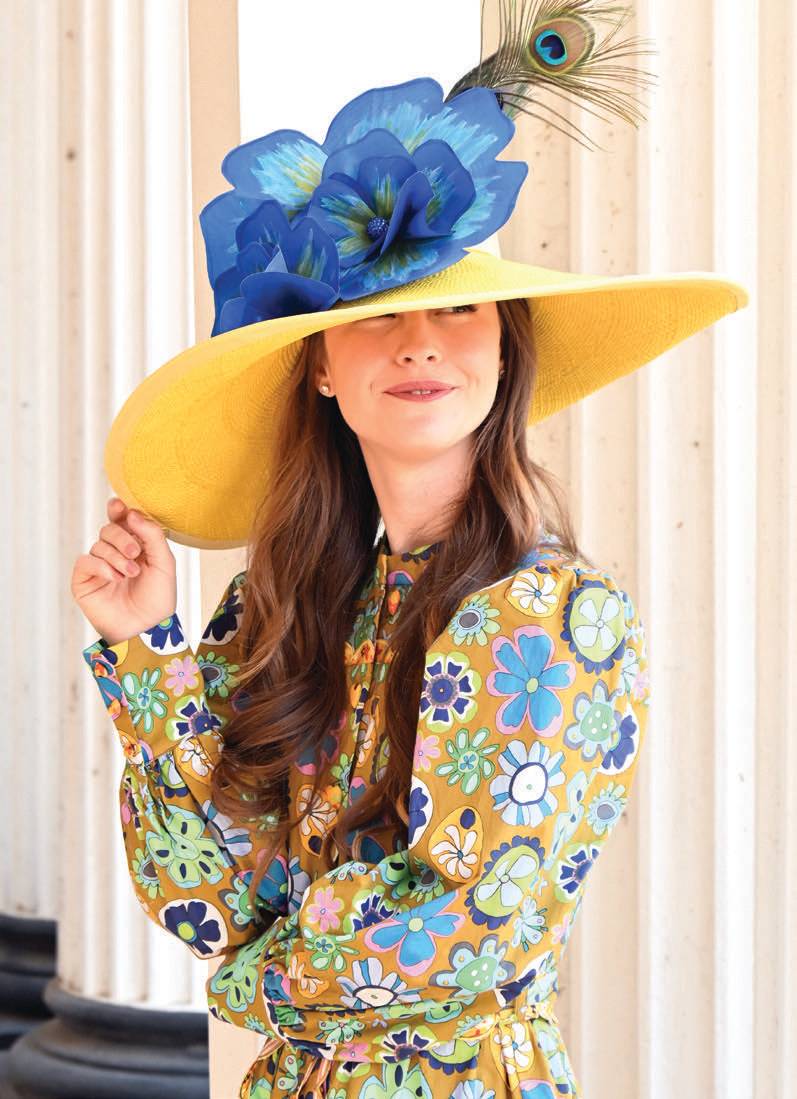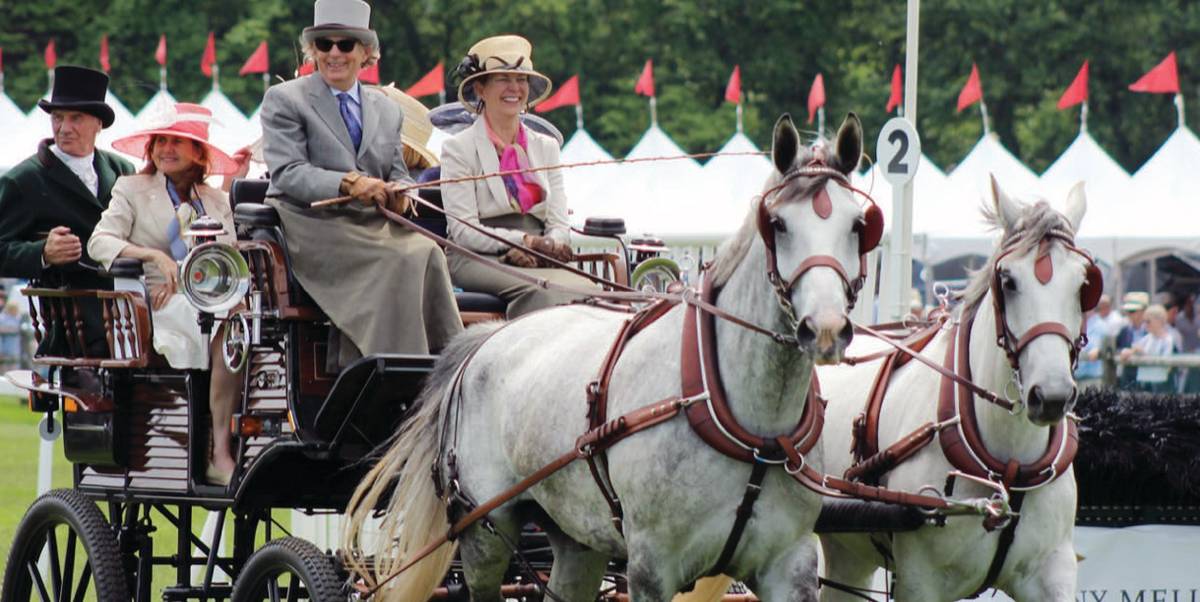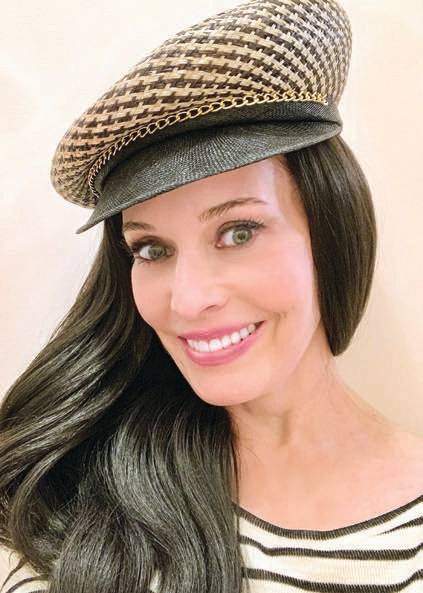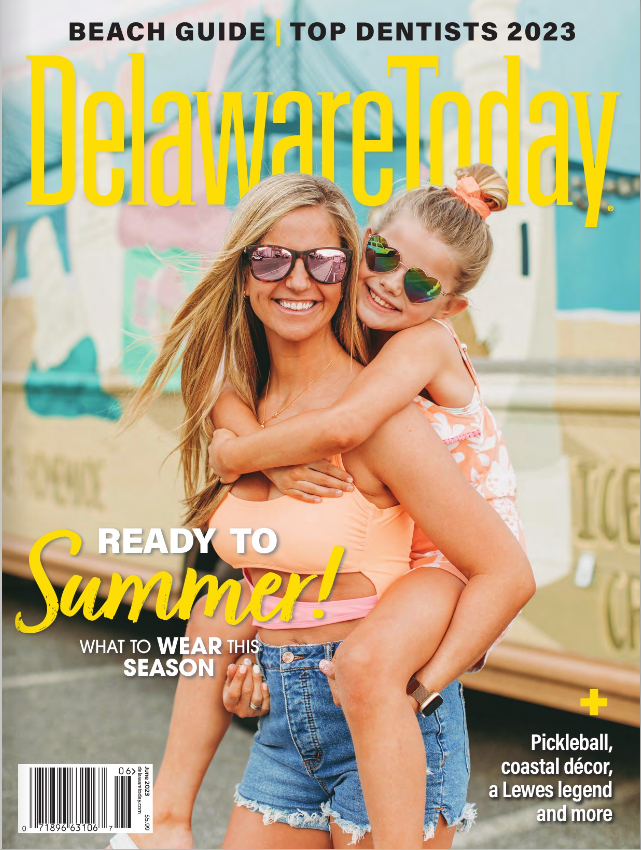Share
Featured courtesy Winterthur
Get to know the region’s premier hat purveyors in time for the start of racing season in and around Delaware.
Christine A. Moore
Horse races are like hats, says Christine A. Moore. Each one has a distinct personality. “The Kentucky Derby is over the top, with big brims and lots going on,” says the milliner. “Point-to-Point is more like the Preakness—not as Southern belle, feminine but not ostentatious. Radnor Hunt is a little sportier.”
Moore has been official milliner of the Kentucky Derby five times. She also holds the post at the Breeders’ Cup, Iroquois Steeplechase and Jim McKay Maryland Million Day. And she’s the official hat designer for America’s Best Racing.
Moore first considered a career in millinery when she studied costume design at the Walnut Street Theatre in Philadelphia. “I was in awe watching the milliner create hats,” she says. “After that, that’s all I did.”
Most of her hats are sold where racegoers shop, including Wilmington Country Store in Greenville, Delaware. Merchants often refer patrons who want a hat in a different color or with individualized trims. Many simply hand over the reins to Moore, trusting her to create the perfect design.

A hat from Christine A. Moore. Courtesy of Christine A. Moore.
Moore embraces the traditions of millinery, noting that Philadelphia was the epicenter of women’s hat-making for more than a century. When Stetson left the city for new digs in Texas, she bought hat blocks from the factory.
Her spring hats are made from straw and other natural fibers. “We don’t buy ribbon or premade flowers. We make them from silk because it holds the shape the best,” she says.
For racegoers, weather is always a concern. On rainy days at the Kentucky Derby, women frequently enter the grandstands with plastic trash bags draped over Moore’s glamorous creations. “Steeplechase people are outside, so the weather is more of an issue,” she say. “With flat racing, you just have to get to the stands.”
Moore reshapes hats for patrons who’ve been caught out in the rain. “If you think it’s going to rain, wear a fascinator or something with feathers,” she says. “Birds fly in the rain, and rain won’t hurt feathers.”
Visit camhats.com.
Wilson King
Wilson King wears lots of hats. An ardent carriage driver, he dons the appropriate top hat, bowler or fedora whenever he takes the reins. He’s also the founder of Chester County’s Outback Trading Company, whose garb for outdoors enthusiasts includes oilskin hats with generous brims, which are ideal for spectators at drizzly steeplechase events.
King is also a collector of hats, from wool felt chapeaus for men to fanciful fascinators for women. The hats aren’t for display—they’re meant to be shared. “I have one in every size, because you have to do it to the nines,” he says. “When I do driving, people can pick the hat they want.”

Wilson King at the reins. Courtesy Winterthur.
Typically, the carriage dictates the attire. “If you’re in a sporting vehicle, you’d likely wear a fedora,” King notes. “For country, I’d wear a tweed coat and a wool felt hat.”
Outback Trading carries a black, equestrian-themed oilskin cap, its leather inspired by his experiences in the Australian band accented with a brass snaffle bit. King designed most of the hats he sells, Outback and translated into wool, mesh, straw, leather and oilskin. The latter was developed in 1898 by Edward Le Roy, a New Zealander who painted sailcloth with a mixture of linseed oil and wax to produce a waterproof garment.
A tip of the hat to King’s old friend George A. “Frolic” Weymouth, the Frolic is a stylish fedora crafted from braided raffia, accented with a simple brown band. The Kodiak oilskin hat offers a wide wired brim, a UPF rating of 50, and a handy koala pouch in the crown to safely stow money and a license. “If it’s a rainy day, we see a lot of oilskin hats,” King says.
King also enjoys designing carriages, including the custom-made roof-seat break wagonette made to his specifications in Poland. It’s pulled by four white Canadian sport horses. Frolic would get annoyed whenever anyone appeared at a carriage wearing a baseball cap. “Run-of-the-mill baseball caps are not cool,” King says. “Although there’s nothing wrong with an oilskin baseball cap if you’re just out for a drive.”
Visit outbacktrading.com.
Tiffany Arey
Like tulips, fanciful hats pop up each spring with the return of steeplechase racing. Long before the season starts, fashionable heads turn to milliner Tiffany Arey. “The more lead time, the better,” says the celebrated milliner. “Someone who’s going to an event in May might call in January, although we can usually accommodate people on a deadline.”
The Chester County native is self-taught, learning by poring through vintage books “and anything I could find online, including videos on YouTube.” That led to a connection with a global community of milliners who are keeping hat-making alive. When she takes on a new client, Arey typically starts the process by asking for a photo. “I want to see their coloring and the way they wear their hair,” she says.

Courtesy Tiffany Arey.
Arey’s exuberant bonnets for spring and summer are crafted from various types of straw. Her leather- and fabric-covered hats can be worn year-round. Designs range from a simple silk pillbox with a tailored bow in the back to an elaborate Gainsborough with ribbons, feathers and an 18-inch brim.
Arey also rents hats. Lulu, a sweet yellow saucer topped with twizzle reminiscent of a buddy whip, rents for $20. Salon Laduree, a big-brimmed garden hat that resembles a saucy pink platter of flowers, fetches $90. Prices are for a four-day rental. “It’s great for people who want something at the last minute or don’t have space to store hats,” she says.
Arey recommends assembling an outfit well before race day. “If you have a hat that you want to be the star of the show, keep your outfit simple,” she says. “Don’t wear too many patterns or colors.”
Visit tiffanyareymillinery.com.
Related: The Skimboarding Scene Is a Staple in Dewey Beach’s Culture



